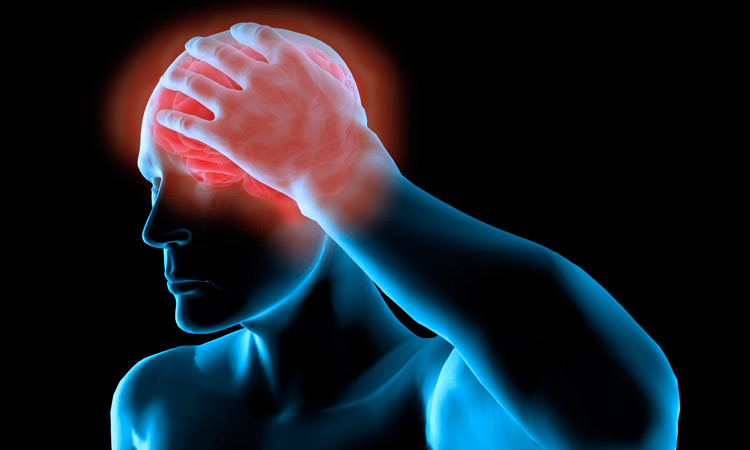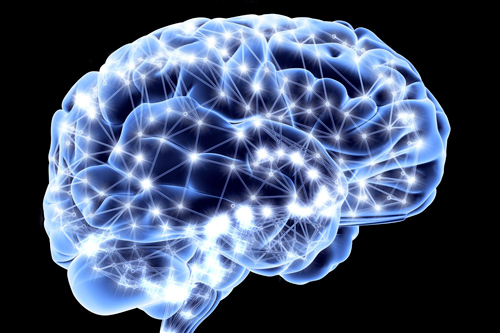 While sports concussions capture the limelight, this mild traumatic brain injury (TBI) can occur more often than you think in every day life, at any age, and with varying levels of severity. Even seemingly non-injury hits to the head count too, increasing the risk of sustaining a concussion later. The next hit could cause a concussion, like a brain sprain that at a microscopic view can impact your life on a macroscopic level.
While sports concussions capture the limelight, this mild traumatic brain injury (TBI) can occur more often than you think in every day life, at any age, and with varying levels of severity. Even seemingly non-injury hits to the head count too, increasing the risk of sustaining a concussion later. The next hit could cause a concussion, like a brain sprain that at a microscopic view can impact your life on a macroscopic level.
Here’s what to know about this brain injury and, more importantly, why.
1. Concussions are common
Everyone is at risk of concussion. Getting out of the car, a slip in the shower, slam on the ground—whether it’s on a bicycle, skiing, skateboarding, roller blading, sledding, slipping on ice—or just a random hard bump from running into a pole, walking into a closed sliding glass door or low ceiling beam, risk of concussions are more prevalent than you think.
The Center for Disease Control estimates more than three million incidents are reported every year from emergency rooms and urgent care clinics nationwide. Now, imagine how many times concussions occur and go unreported.
The straw that breaks the camel’s back is the accumulation of “sub-concussive” hits, which the latest science estimates to require about 20gs of force to create. How much is a 20 g-force hit? It’s hard to measure without a sensor. But think of it as a more significant than a typical knock, bump or fall, but hard enough to make you wonder. These sub-concussive hits will not reveal themselves with concussion symptoms, but will add up over time.
Therefore, the next hard hit could cause a concussion, a brain injury that at a microscopic level can impact your life on a macroscopic level.
2. Concussions can be serious, but they are manageable
The brain is involved in every thing we do. So, a concussion is much more serious than a bump on the head. It could affect the rest of your life.
The moment the brain suffers a concussion, a number of neurological and physiological events occur to facilitate the brain’s recovery. The brain organ is responsible for regulating every function in the body, so the period of time immediately following a brain injury is the most critical.
Given enough rest, and time, concussions can heal. However, all efforts should be made to avoid “Second-Impact Syndrome,” which happens when a second concussion injury occurs before a previous concussion injury heals. Unfortunately, this results in a 90% chance of permanent traumatic brain injury (TBI), and 50% chance of death.
Suffering multiple concussions, even should symptoms seem to disappear, also may lead to greater risk of TBI. Know the symptoms. Respect the brain injury. This is definitely an injury where it’s better “to be safe than sorry.”
3. Concussion injuries vary by individual
 The moment a concussion occurs, the individual’s brain begins self-assessing, tasking the potentially injured brain and body to cooperate instantly and signal a concussion pass or fail score.
The moment a concussion occurs, the individual’s brain begins self-assessing, tasking the potentially injured brain and body to cooperate instantly and signal a concussion pass or fail score.
Unfortunately, the injured person is not the best judge to make this decision. Complicating things further, the extent of the injury varies based on a number of issues.
Therefore, not all concussions are created equal because everyone’s brain has a different threshold or margin for absorbing hits. Our brain health is based on heredity and genetic factors, gender differences, pre-natal health, history of prior brain trauma, nutrition, exercise, sleep, toxicity from alcohol and use and abuse, tobacco smoking, and presence of environmental toxins from drinking water, air we breathe, and chemicals we eat from food.
The concussed brain is reeling from imbalances while trying to heal itself which can impact people differently, as well. A few examples of how concussions affect the brain, include:
- Cognitive (thinking, impulse control, decision making)
- Memory and concentration
- Emotional (mood swings)
- Balance
- Vision disturbances
- Auditory differences
- Strength and sensation changes
- Coordination
- Reflexes
4. Be a “Concussionologist” starting with the basics
 After reading my new book, Concussionology, Dr. Alan Ashare, a board member for Team USA Hockey, suggested people who study the injury and help create awareness of proper care be tabbed, “Concussionologists.” Here are a few basics everyone should know.
After reading my new book, Concussionology, Dr. Alan Ashare, a board member for Team USA Hockey, suggested people who study the injury and help create awareness of proper care be tabbed, “Concussionologists.” Here are a few basics everyone should know.
- Do NOT attempt to move an unconscious person after receiving a hard hit. Call 911.
- When in doubt, sit them out. Err on the side of caution. If you suspect a concussion from sports, do not return to the game. Depending the severity of the symptoms, you may also expect a delay in returning to work or school.
- Most symptoms of concussions take several minutes, hours, even days to materialize. Use the assistance of a mobile app, such as XLNTbrain Mobile, to help identify the risk of concussion.
- The most obvious signs of concussion are headache, wobbly walking, vacant stares, memory loss or confusion.
These are bare basics. But I give enough detail in my new book to help you to become a budding “Concussionologist.”
Click here to get inspired by Rose’s easy steps to positively change your mind


